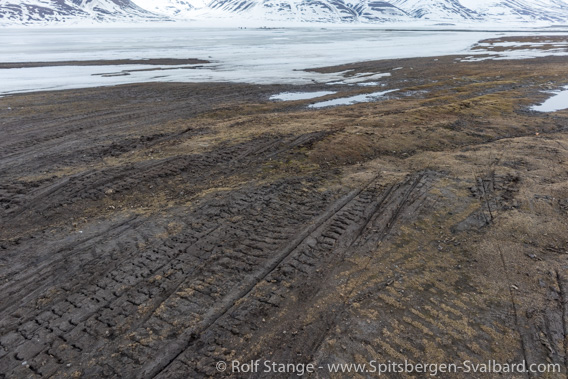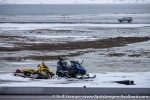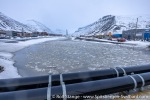-
current
recommendations- Liefdefjord
New page dedicated to one of Spitsbergen's most beautiful fjords. Background information and many photos.
- New Spitsbergen guidebook
The new edition of my Spitsbergen guidebook is out and available now!
- Liefdefjord
New page dedicated to one of Spitsbergen's most beautiful fjords. Background information and many photos.
Page Structure
-
Spitsbergen-News
- Select Month
- May 2025
- April 2025
- March 2025
- February 2025
- January 2025
- December 2024
- November 2024
- October 2024
- September 2024
- August 2024
- July 2024
- June 2024
- May 2024
- April 2024
- March 2024
- February 2024
- January 2024
- December 2023
- November 2023
- October 2023
- September 2023
- August 2023
- July 2023
- June 2023
- May 2023
- April 2023
- March 2023
- February 2023
- January 2023
- December 2022
- November 2022
- October 2022
- September 2022
- August 2022
- July 2022
- June 2022
- May 2022
- April 2022
- March 2022
- February 2022
- January 2022
- December 2021
- November 2021
- October 2021
- September 2021
- August 2021
- July 2021
- June 2021
- May 2021
- April 2021
- March 2021
- February 2021
- January 2021
- December 2020
- November 2020
- October 2020
- September 2020
- August 2020
- July 2020
- June 2020
- May 2020
- April 2020
- March 2020
- February 2020
- January 2020
- December 2019
- November 2019
- October 2019
- September 2019
- August 2019
- July 2019
- June 2019
- May 2019
- April 2019
- March 2019
- February 2019
- January 2019
- December 2018
- November 2018
- October 2018
- September 2018
- August 2018
- July 2018
- June 2018
- May 2018
- April 2018
- March 2018
- February 2018
- January 2018
- December 2017
- November 2017
- October 2017
- September 2017
- August 2017
- July 2017
- June 2017
- May 2017
- April 2017
- March 2017
- February 2017
- January 2017
- December 2016
- November 2016
- October 2016
- September 2016
- August 2016
- July 2016
- June 2016
- May 2016
- April 2016
- March 2016
- February 2016
- January 2016
- December 2015
- November 2015
- October 2015
- September 2015
- August 2015
- July 2015
- June 2015
- May 2015
- April 2015
- March 2015
- February 2015
- January 2015
- December 2014
- November 2014
- October 2014
- September 2014
- August 2014
- July 2014
- June 2014
- May 2014
- April 2014
- March 2014
- February 2014
- January 2014
- December 2013
- November 2013
- October 2013
- September 2013
- August 2013
- July 2013
- June 2013
- May 2013
- April 2013
- March 2013
- February 2013
- January 2013
- December 2012
- November 2012
- October 2012
- September 2012
- August 2012
- July 2012
- June 2012
- May 2012
- April 2012
- March 2012
- February 2012
- January 2012
- December 2011
- November 2011
- October 2011
- September 2011
- August 2011
- May 2011
- April 2011
- March 2011
- February 2011
- January 2011
- December 2010
- November 2010
- September 2010
- August 2010
- July 2010
- June 2010
- May 2010
- April 2010
- March 2010
- February 2010
- November 2009
- October 2009
- August 2009
- July 2009
- June 2009
- May 2009
- April 2009
- March 2009
- February 2009
- January 2009
- December 2008
- November 2008
- October 2008
- August 2008
- July 2008
- June 2008
- May 2008
- April 2008
- March 2008
- February 2008
- April 2000
- Select Month
-
weather information
-
Newsletter

| Guidebook: Spitsbergen-Svalbard |
Home →
Daily Archives: 17. March 2022 − News & Stories
… bad times: rain and melting snow in the winter
Well, “bad times” is clearly a very relative description of life in Longyearbyen. We are having a good life. No bombs are falling from the sky. Just rain. But, hey … rain! In March! And far too much, and a large proportion of the white beauty around is is just melted and flown away during the last couple of days.
A strong low pressure system further south in the north Atlantic has pumped a lot of warm air up north. This warm air incursion brings wind, rain and melting temperatures. Far more of all of these than we actually appreciate.
Our little world up here is melting.

Longyearbyen: rain and meltwater turn streets into little lakes.
This was at least our impression for several days, wherever you turned the eye. Water was falling down from the sky, water turned the snow grey, then dark and finally into water, creating lakes on flat tundra areas. Water broke through the snow in rivers that should remain frozen for several months still.
Rubber boots were the best choice for a little walk. It happens quickly that you make one wrong step and your foot disappears in a deep hole of slush, a very cold and unpleasant mixture of snow and meltwater. On the other hand, it can be slippery and smooth as glass just a step further. It is very popular in Norway to use spikes. A great invention, they have certainly saved many people from broken legs and what not.

Drainages had to be created in many places to prevent the rivers from flooding.
Normal routine in May and June, but very uncommon in March.
For anything further away, any tours out into the arctic winterwonderland of Spitsbergen in the late winter: it is pretty much the only reasonable option to wait until Spitsbergen actually is a winterwonderland again. It wasn’t for days on end, and it still isn’t at the time of writing. Winter will beyond any doubt return. It is not gone, it is just taking a break. It will be colder again, the rivers will freeze again, lakes will turn into ice.
The question is if we get enough snow again to tour reasonably out there in the wild, filling the many dark gaps where the tundra is now free of snow. Let’s hope so, in the interest of all who are coming up here with dreams of the arctic winter. There are many of them in March and April.

Snow mobile routes have turned into slushy snow swamps and lakes. If you drive here, you risk getting stuck and damaging the vegetation under the slush.
Until the snow melt comes in May and finishes this wintern for good.

It is, for good reason, not allowed to drive on natural ground unless it is frozen AND snow-covered. There are those who take a liberal approach to this rule at the end of the season or during warm weather spells, to put it mildly – although it is legally binding. The result looks like this and it will take many years without further disturbance to for the vegetation to recover (Adventdalen, next to the road. Picture taken in june 2019).
The question will inevitably come up: is this now weather or climate change? My short answer: it has aspects of both. Weather and climate are hard to separate when it comes to any given meteorological event. Both are just different perspectives, different time scales, for pretty much the same collection of phenomena which altogether describe the atmosphere, especially its lower layers (that’s where we usually are). Such as temperature, precipitation, wind, air pressure and humidity, to name some of the most important ones. Weather is what you can see, feel and measure here and now. If you collect the same data over many years and turn them into averages and other statistical values, then you take the climate perspective.
So, in this given case, it is hard to say if it would have happend without climate change. Science has made important advances in recent years regarding such questions, so it would be interesting to hear an expert’s opinion or even see the results of scientific modelling of this week’s warm air incursion in Spitsbergen.
All I can do here is try to come up with some more or less educated guessing. The tendencies that climate change create for this part of the Arctic appear to be pretty clear: more frequent weather changes, more strong wind, more precipitation, especially more rain in the winter.
There are those who will say now that winter rain was not completely unheard of 100 years ago, and yes, that is true. But both the frequency and the intensity of these events are increasing now, and current climate change makes an important contribution to this development, or rather: the decisive one.
So, chances are that we would not have had this week’s warm air incursion up here without climate change, or at least that it would have been much less intense. We have had days of rain and temperatures up to around 5 degrees centigrade – above freezing! In March! I still can’t really believe it.
Also locals who have seen many Spitsbergen winters watch the weather with astonisment and very little amusement these days. And those who came up exactly this week to enjoy the arctic winterwonderland – well, what can I say. My pity is with them.
- gallery anchor link: #gallery_2193
Click on thumbnail to open an enlarged version of the specific photo.
News-Listing live generated at 2025/May/09 at 13:40:36 Uhr (GMT+1)


































